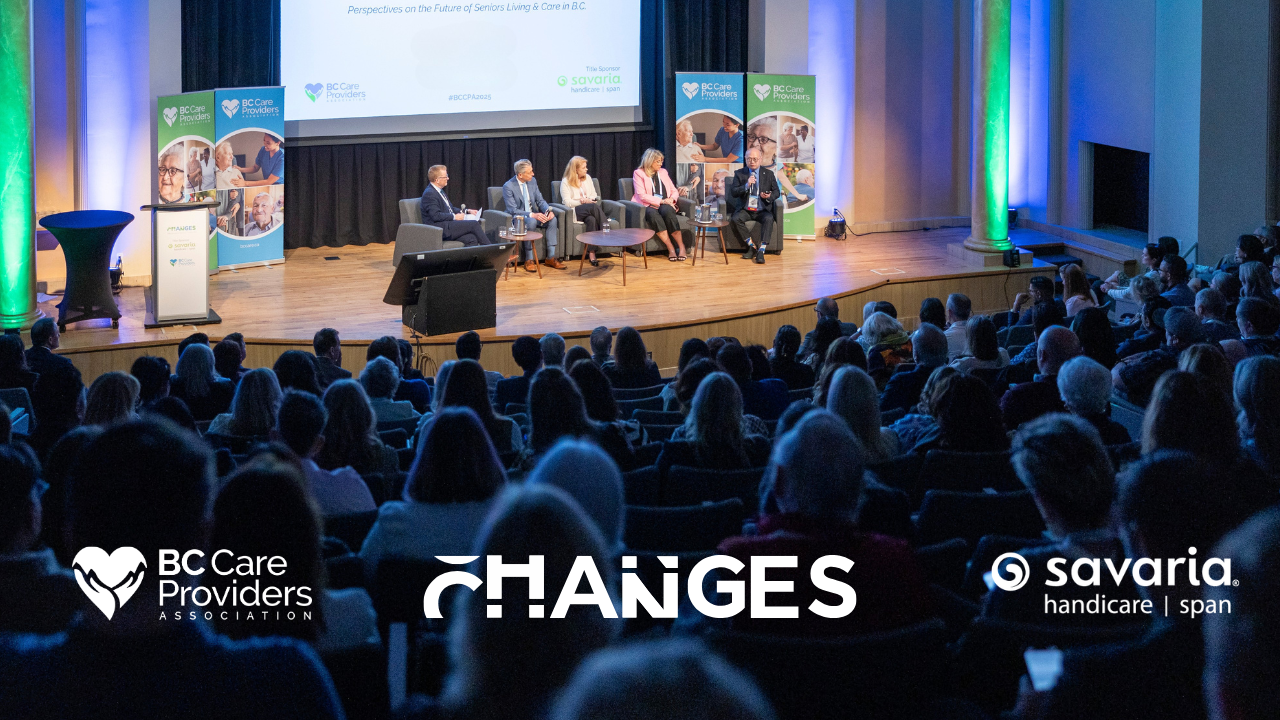In BC, residential care operators across the province are facing critical fiscal challenges in order to meet existing cost pressures while also delivering high quality care for seniors. This is despite an aging population and increasing levels of acuity for residents.
 Currently, a large portion of residents in care homes have one or more chronic conditions at varying levels of severity. For example, according to Ministry of Health data, 61.4 % of residents in care homes have dementia and 20.2% have diabetes. In BC, the growth in demand for health care for frail elderly living in residential care, who already utilize about 25% of health services, is projected to increase by 120% by 2036.
Currently, a large portion of residents in care homes have one or more chronic conditions at varying levels of severity. For example, according to Ministry of Health data, 61.4 % of residents in care homes have dementia and 20.2% have diabetes. In BC, the growth in demand for health care for frail elderly living in residential care, who already utilize about 25% of health services, is projected to increase by 120% by 2036.- Despite multiple chronic conditions, particularly as new entrants are coming into residential care homes with much higher levels of acuity, funding for residents and operators is often less than collective agreement increases, while cost of living increases are not recognizing inflationary pressures and/or enhanced service delivery requirements.
- Another major issue is that some residential care operators are not being advised of their annual fiscal year funding increases until well into the fiscal year. Overall, this uncertainty with respect to funding increases adds undue financial stress and operational challenges for BC Care Providers Association (BCCPA) members who are unaware of what their final operating budgets are until well into or even after the fiscal year in which the services were delivered.
- In light of these and other challenges, the BCCPA passed a special resolution at its May 25, 2015 Annual General meeting outlining some of the following points:
-There is no standard province-wide methodology used by health authorities regarding how base funding and/or annual funding increases are calculated for contracted service care providers;
-There is no consistent province-wide standards linking funding to the level of acuity and medical complexity of seniors in care;
-That the funding of direct care hours for seniors with similar medical conditions varies widely between Health Authorities, within a health authority or a campus of care; and
-That it has become increasingly challenging for residential care and contracted home support members to remain fiscally sustainable due to an identified shortage of funding to cover inflationary costs. - As part of the resolution, it also advocated that the Ministry of Health and Health Authorities formally establish a new BC Continuing Care Collaborative to help improve health outcomes for seniors and further enhance partnerships, dialogue and planning between government, health authorities and service providers.
- The resolution also advocated that the Collaborative establish as one of its priorities the adoption of four core principles that would help the business-to-business relationship between contracted providers and the health authorities. These four core principles include:
-Timeliness: Health Authorities will aim to provide care providers in writing with their funding notice prior to March 31st but no later than 90 days after the start of the fiscal year on April 1st.
-Fiscal Sustainability: Contracted care providers are provided the necessary funding to cover identified year-over-year costs related to inflation in order to ensure they remain financially whole.
-Equity: The calculation of funding lifts and direct care hours is consistent within and across health authorities.
-Communication and Transparency: Contracted service providers are provided with timely and appropriate communication regarding any significant issue related to their funding relationship with the health authority; and the methodology used to calculate annual funding lifts will be shared openly with care providers. - In conjunction with the unanimous passage of the special resolution at the AGM, the BCCPA sent letters to the Health Authorities articulating these and other concerns facing care operators.
- In follow-up, the BCCPA has also been meeting with Health Authority representatives, namely Chief Financial Officers, to outline these and other concerns. As part of this process and in accordance with the principle of fiscal sustainability as outlined in the resolution, the BCCPA has also attempted to get a better idea of funding lift comparisons between Health Authorities.
- After contacting the Health Authority Chief Financial Officers and receiving follow-up information, the BCCPA has developed the following table which shows funding lift percentage increases to residential care operators for 2014/15 along with various cost increases facing operators including Medical Service Plan (MSP), Municipal Pension Plan (MPP), CPP, utilities, etc….
- As seen in the graph attached, only the following Health Authorities identified that their funding lift covered the identified costs: Vancouver Coastal (MSP, MPP, Non-compensation support and other); Fraser Health (Non-compensation support costs and utilities); and Vancouver Island Health (Non-compensation support costs and other).
- In general, while non-compensation support costs were largely covered by funding lifts the other areas, however, were not. This demonstrates, as outlined earlier, the insufficiency of current funding lifts and the need for further progress to ensure that residential care operators are appropriately funded.






